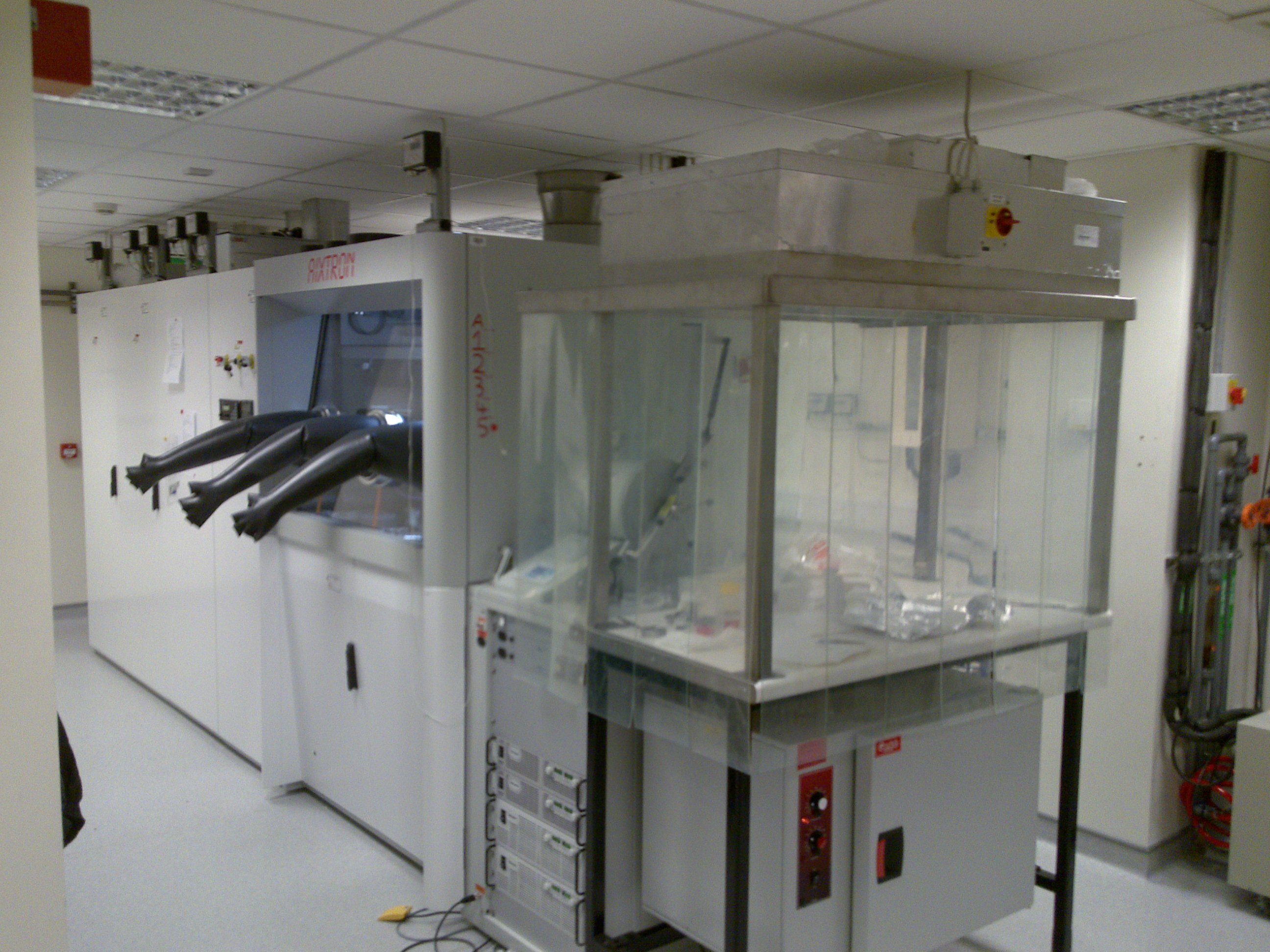Epitaxy is the process of preparing layers of a crystal material on a single crystal wafer, or substrate. Both crystal materials may be the same (homoepitaxy) or different (heteroepitaxy). Epitaxy can allow the formation of extremely high quality layers of material, with the properties, such as their conductivity and composition being controllable literally on the atomic scale. Certain semiconductor devices such as high brightness light emitting diodes (LEDs) and lasers, are virtually all created using semiconductor epitaxial methods.
Methods to prepare, or grow, such crystal layers include high vacuum methods where “beams” of atoms or molecules irradiate a heated substrate to give growth of the crystal layer (e.g. Molecular Beam Epitaxy). Other methods use chemical reactions on the surface, with transport of the materials in the liquid (Liquid Phase Epitaxy) or as a gas (Vapour Phase Epitaxy) to the substrate. Normally metals require high temperatures to be gaseous making reactor design difficult, but compounds called metalorganics have a high enough vapour pressure to allow it to be transported in pipework at around room temperature to the reaction zone.
The most common method to produce III-N semiconductors is by MOVPE. To produce for example gallium n itride, for example, one uses trimethylgallium, (CH3)3Ga, and ammonia, NH3, gas. Ammonia stored in a gas bottle and it is passed to the reactor, with a precisely controlled flow. Trimethylgallium is a liquid at room temperature and is stored in a container called a bubbler. The bubbler is stored in a bath at a constant temperature. A precise flow of hydrogen (or nitrogen) gas is passed through a tube into the bottom of the liquid and as the bubbles float up through the liquid a small amount of the trimethylgallium is picked up. The trimethylgallium in hydrogen mixture is then transported to the reactor where it can react with the ammonia to form gallium nitride. An idealized equation for the reaction is:
The reaction takes place over a substrate heated to around 1000oC allowing single crystal GaN to form on the substrate surface. By including trimethylaluminium in the flow we can make AlGaN alloys, and similarly trimethlylindium gives InGaN. The conductivity of the material can be controlled by adding small amounts of silicon (using silane, SiH4, gas) to make the material n-type; or magnesium (using bis(cyclopentadienyl)magnesium) to make it p-type. As the gases are transported to the reactor in pipework at room temperature air operated valves can be used to switch gas flows off and on, allowing semiconductor layers with thicknesses of only a few atoms to be made. Multiple valve switching using computer control allows very complex multiple layer structures to be manufactured for a particular device purpose.

There are many areas of research in the preparation of these materials. These mainly centre around reducing the defects in the material, or the growth of novel device structures.
Structural Defects: Gallium nitride and aluminium nitride substrates are difficult to manufacture and thus generally not available in commercial sizes or quantities. Thus many devices are grown on sapphire, silicon carbide and more recently silicon substrates. Due to differences in the atomic spacing and crystal structure, a high density of defects, such as dislocations, is incorporated to relieve the structural differences. While GaN devices are tolerant of fairly high defect densities, it is vital to reduce these as far as is possible.
At Sheffield my group developed methods to using AlN grown at high temperature (rather than “low temperature” GaN layers) as the first stage in the nucleation process on a sapphire substrate. Methods modifying the growth conditions and in controlling the interface between AlN and subsequent (Al)GaN have provided device quality templates. Indeed in the case of GaN growth on AlN we could obtain defect densities generally better than those achieved using the conventional approaches on sapphire.
Device Structures: Most modern semiconductor devices have complex device structures. These are made up of many layers of different compositions, requiring tight growth control. In the case of III-N materials the differences in optimal conditions for deposition of AlN, GaN and InN are very large, thus the growth of complex structures is particularly challenging. My group at Sheffield developed methods to grow high quality InGaN quantum wells and dots for incorporation optoelectronic emitters, AlGaN multiple layers stacks for short wavelength microcavities and also examined the growth of AlInGaN for ultraviolet emitters.
At Tyndall we propose to use this knowledge to further develop emitters in the ultraviolet and visible, as well as develop new device concepts for both electronic and optoelectronic applications.